The family and I plus my colleagues Steve and John took the 1.5 hour flight to Xian this weekend to see the sights. On the top of the list, of course, was the famous Terracotta Army, so we headed out on a muggy, hot day to check it out.
After fending off the numerous offers in the parking lot for a tour guide, we walked through a long shopping plaza to get to the entrance. (Tip: it’s probably worth the 5 RMB to take the electric tram to the entrance. Bonus tip: hang on to your tickets – you’ll have show them to various guards several times.)
It might have been worth getting a tour guide for 100 RMB (about USD$15). As they warned me in English and Chinese, the site is not well marked. We figured out where pit #1 was and headed over to the building to see Qin Shi Huang’s army.
The building housing pit #1: 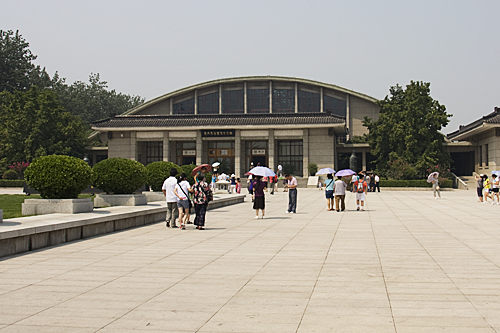
Inside this building was the largest of the excavated pits. It was really breathtaking. It’s huge. If you look in this photo, you can see the tourists gathered around the edges of the pit. The soldiers were arranged in “rooms” divided by rammed earth walls that are apparently as hard as concrete. The rooms were covered with logs, grass mats, and dirt, forming a roof. 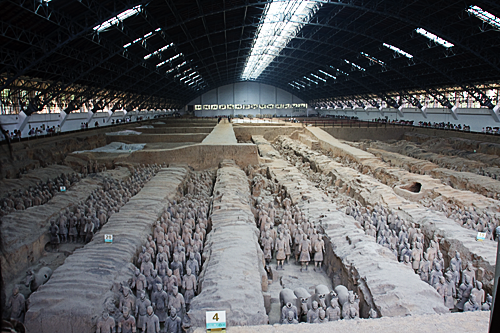
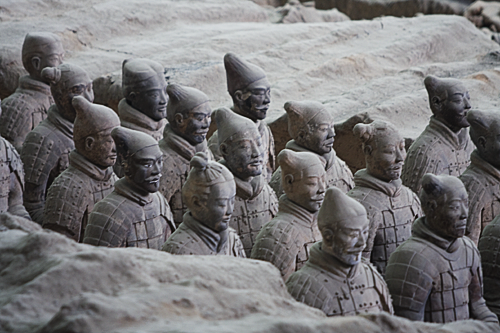
Note the original entrance used to populate the rooms; the doors were later sealed. 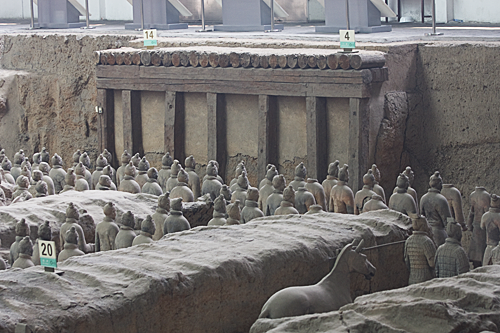
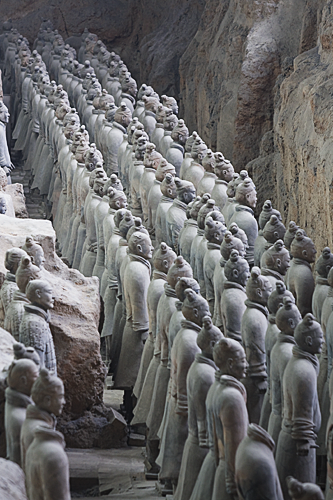
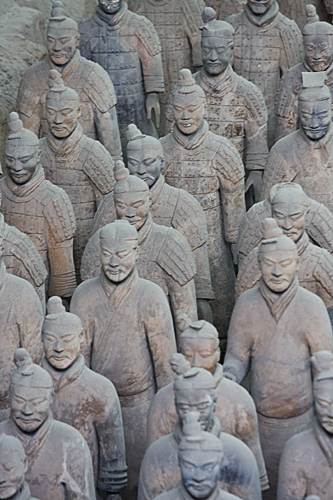
There’s still a lot of work to be done at the sites. Here is a platoon in various states of re-assembly. 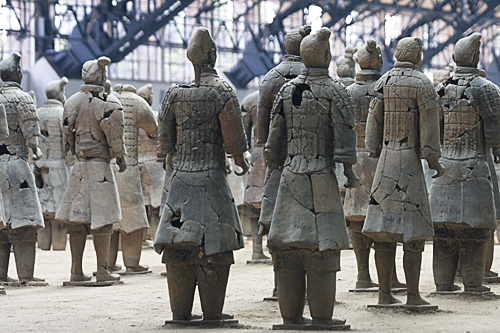
In fact, there are many parts of the site that archaeologists have yet to unearth. They’re going slowly, apparently to limit the environmental damage from pollution, moisture (including that from the breath and sweat of the all the tourists), and mold that are beginning to take a toll on the ones already exposed. 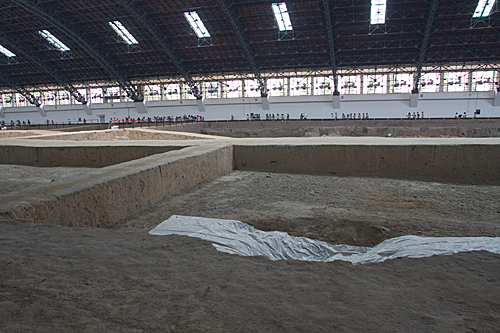
The detail of each of the soldiers was really amazing. While the faces are all unique, the soldiers were apparently mass produced. The faces came from a set of base patterns and then were “personalized” to add expressions and different features. The different body parts were fired separately and then assembled. The pieces were all originally painted, but the color has faded over the years. This was a bit of a surprise to me since I’ve always seen the in the familiar brown color. They all originally had bronze weapons, but these were looted. However, the ones they recovered were still sharp due to the advanced chrome plating process used – thousands of years ahead of similar plating technology in the west. 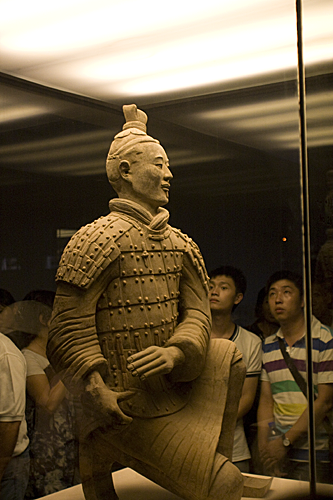
In addition to the terracotta figures, they had two bronze chariots on display. These were smaller than real life (I think half sized), but still amazingly detailed and beautiful. 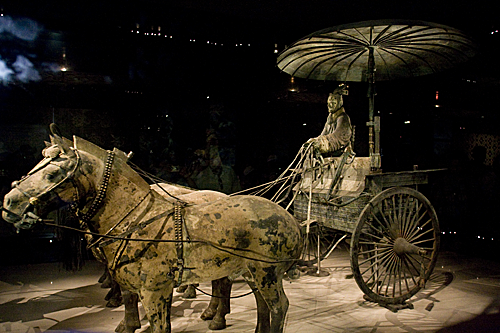
There was one weird thing. Ahead of the Olympics last year, they (not sure who “they” really is) built a huge terracotta solider marionette that held hands and danced with a Western-doll marionette. The two were just creepy. 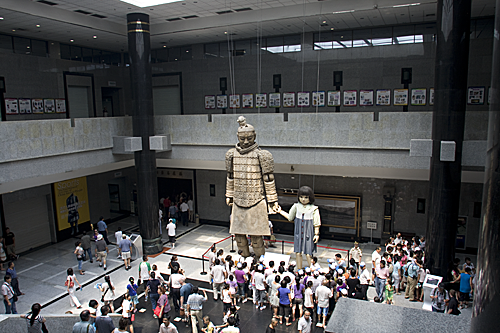
Overall, the artifacts were really amazing as was the scale of the display. I just had no idea it was so huge (also, only about 1000 of the estimated 8000 soldiers has been excavated so far). Perhaps even more tantalizing are the reports of huge, 22 square mile (56 sq. km) necropolis nearby with a map of all of China. The old records say the ceiling is studded with pearls, simulating the night sky, and mercury was pumped to simulate river flows. To unearth the entire site, twelve villages and several factories would have to be moved. Almost none of the site has been uncovered and the entrance to the tomb has not been found yet. However, the soil apparently has high concentrations of mercury. It’s staggering to think of this level of accomplishment in 210 BC.
The only real downsides were the mobs of pushy tourists and the heat. It was difficult to really look at the statues and take in everything with so many people around (often thoughtlessly shoving, talking loudly, and bumping into us); in particular, it took some effort to stay connected with the kids. We were also just hot the whole time, even though the buildings were somewhat air conditioned. Michelle also wound up with a bottle of faux Perrier at a coffee shop outside the complex (this kind of real-looking packaging with fake contents is unfortunately too common in China.)
Still, the site was incredible to see, and we’re glad we went. Definitely worth a visit.
optimista Reply
Gorgeous photos. I was there in 1996, and I'm pretty sure they didn't allow photo-taking in there then. I'm glad they've changed their mind about that, if for no other reason than I get to experience the grandeur of this site again through your great shots.
That marionette thing does look creepy.